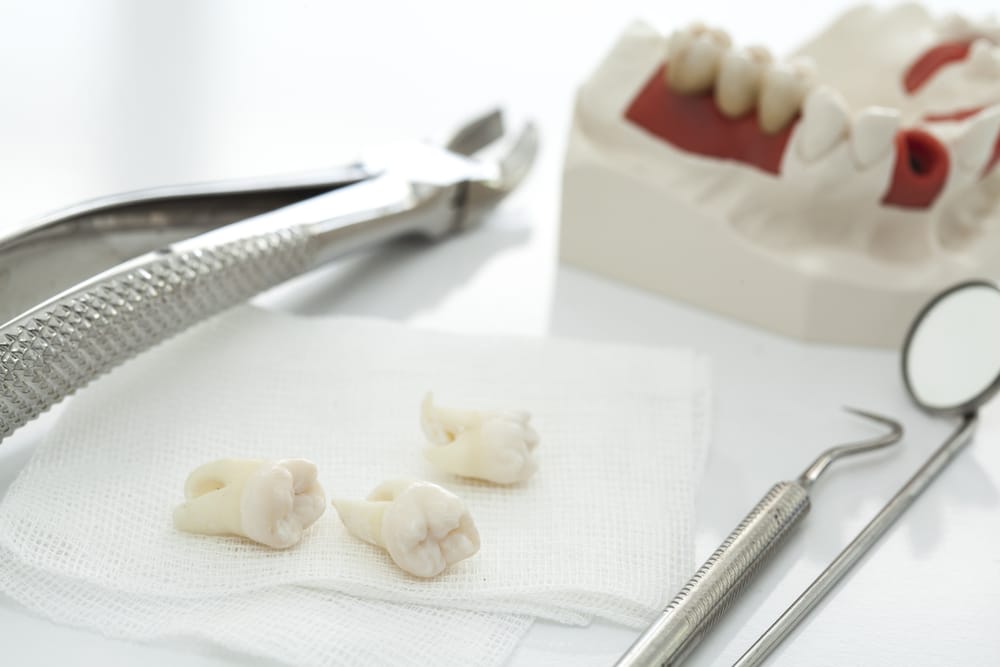Tooth extraction healing stages refer to the process of recovery after a tooth has been surgically removed. After the extraction, the initial healing stage involves the formation of a blood clot in the socket, which helps to protect the underlying bone and nerve endings.
Tooth Extraction Healing Stages
The tooth extraction healing process has three stages: the inflammatory stage, the repair stage, and the remodeling stage.
- During the inflammatory stage, which starts right after the tooth extraction, the body’s immune system cleanses the area and removes bacteria or debris, causing swelling, redness, and pain. This stage typically lasts a few days.
- The repair stage begins after the inflammation subsides and lasts up to six weeks as the body repairs the damaged tissue and bone around the tooth socket.
- The final stage, the remodeling stage, can take up to twelve weeks as the body rebuilds the bone around the tooth socket.
The First 24 Hours

After your tooth extraction, expect blood clots to form and sutures to aid in tissue healing within the first 24 hours.
You may experience minor pain and bleeding, but a prescribed pain reliever can help. Non-strenuous activities like driving and office work can typically resume within a day, though athletic activities and physically demanding jobs may require extra time off.
Swelling peaks around 24 hours post-surgery, but can be reduced with ice packs. If pain and bleeding persist after 2-3 days, consult your dentist for further evaluation.
See more: Sedation Dentistry
1-2 Days Post Extraction
The initial 48 hours following your tooth extraction demand the utmost attention, as this period is critical for the majority of the healing process in your mouth.
It is normal to experience a minor level of bleeding and soreness at the extraction site during this time. To facilitate a successful recovery, we recommend the following:
Rest: Plan to rest for at least the first 24 hours post-extraction to support the healing process.
Gauze management: Allow the initial gauze to remain in place for a few hours to facilitate the formation of a blood clot. Subsequently, change the gauze as needed.
Pain management: Your physician may prescribe potent pain medication for extensive extractions, such as molars or wisdom teeth, based on your medical history. In some instances, over-the-counter pain relievers may suffice to alleviate any discomfort.
Avoid smoking and using straws: The suction created when smoking or using a straw exerts pressure in the mouth, potentially leading to complications with blood clots. It is imperative to refrain from these activities during the initial phase of the healing process.
Head elevation: When sleeping or resting, utilize additional pillows to elevate your head, preventing the accumulation of blood in the mouth, which could prolong the healing period.
See more: Oral Sedation
3 Days Post Extraction
Around 3 days after the extraction, the socket should be mostly healed with no more bleeding and minimal swelling. You might still feel some tenderness, but you should no longer have pain or discomfort. At this stage, it’s crucial to maintain the clot, which requires additional hygiene measures:
- Rinse gently with saline solution or warm salt water to prevent bacteria growth and infection.
- Resume brushing and flossing, avoiding the extraction site. The saline rinse or salt water will clean the area.
- Stick to soft foods to prevent trapping food in the socket, such as soups, yogurt, or applesauce.
Tips for speeding up healing time

To speed up the healing process after tooth extraction, there are a few things you can do.
- First, practice good oral hygiene by brushing your teeth twice a day and flossing regularly. Eating a healthy diet rich in vitamins and minerals can also help.
- Avoid smoking as it can delay healing.
- Applying ice packs to the face can reduce swelling, and taking over-the-counter pain medication can alleviate discomfort.
If you have any questions or concerns, consult with your dentist for more specific instructions based on your situation.
See more: What Does IV Sedation Feel Like?
Request An Appointment
In conclusion, understanding the stages of healing after a tooth extraction is crucial for a smooth recovery and optimal oral health. From the initial formation of a blood clot to the gradual closing of the extraction site and eventual bone regeneration, each stage plays a pivotal role in the healing process.
Following post-extraction care instructions provided by your dentist is essential for a successful recovery. If you’re experiencing any complications or have concerns during the healing stages, seeking guidance from dental professionals at Dentist For Life ensures comprehensive care and support.
Don’t hesitate to schedule an appointment with us to ensure a healthy and hassle-free recovery from your tooth extraction. Your comfort and oral well-being are our top priorities.



